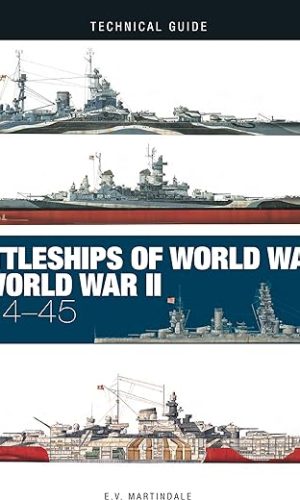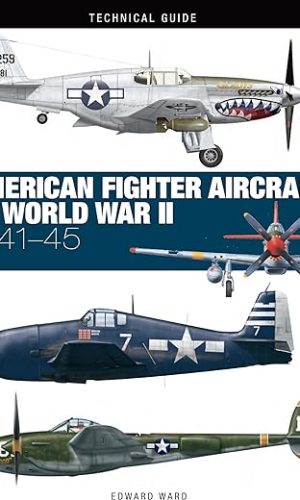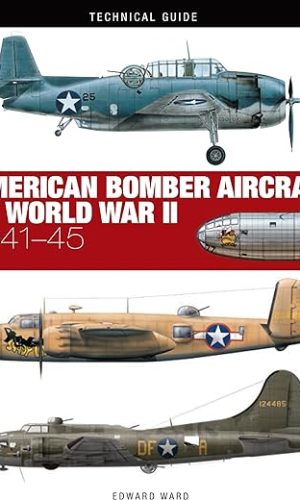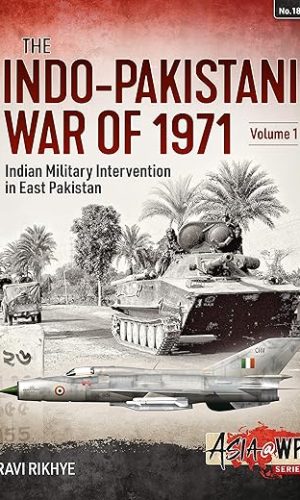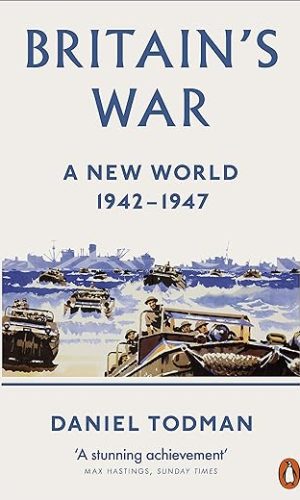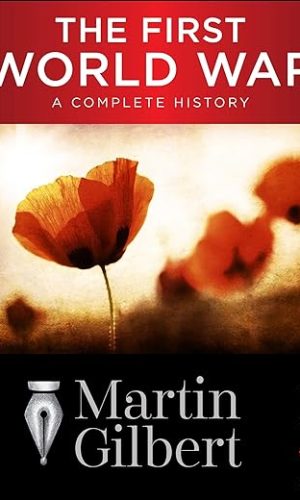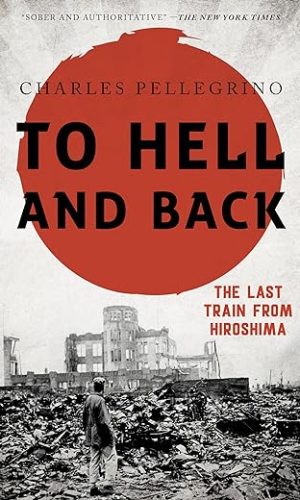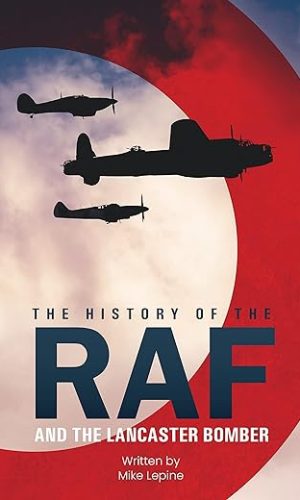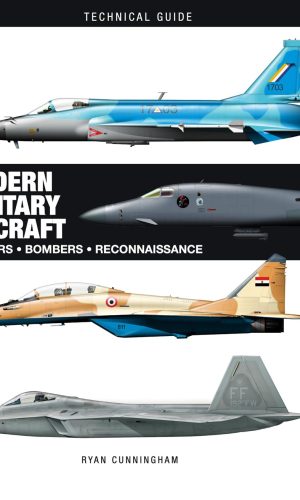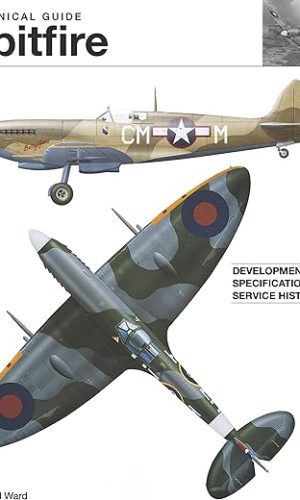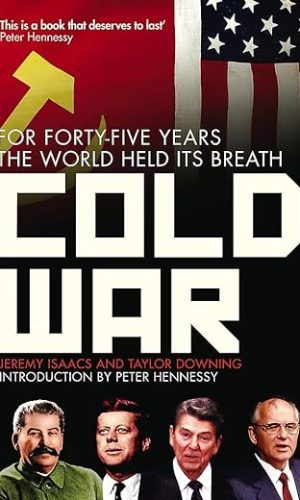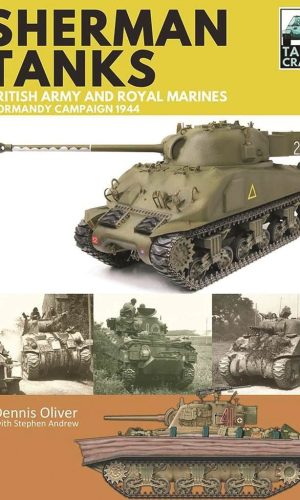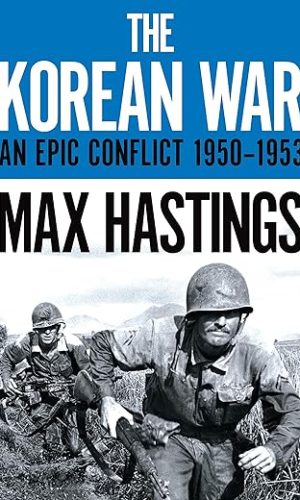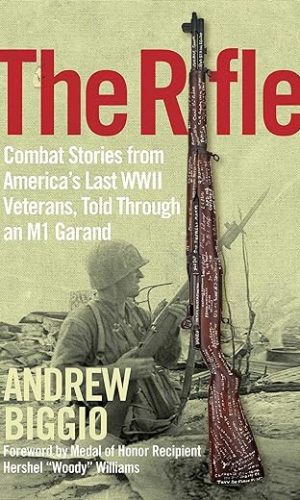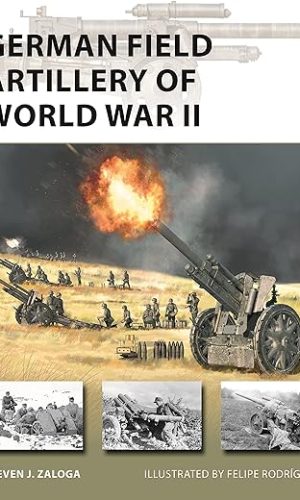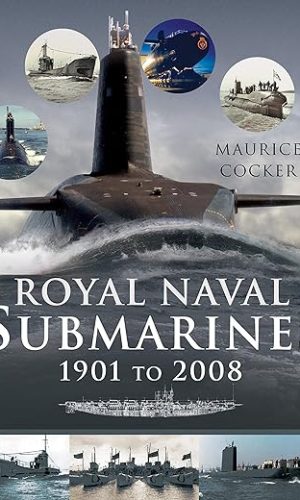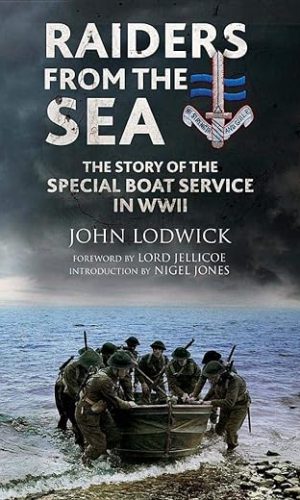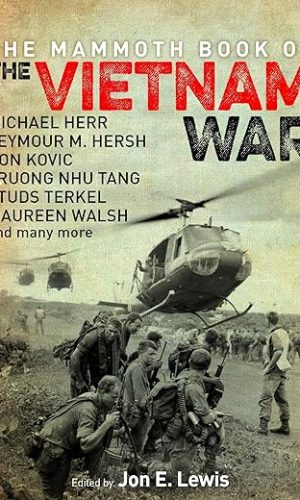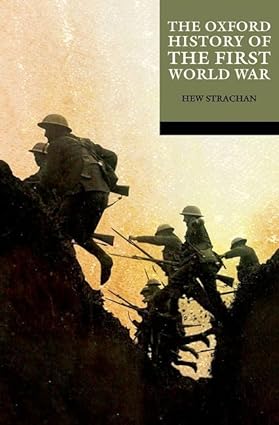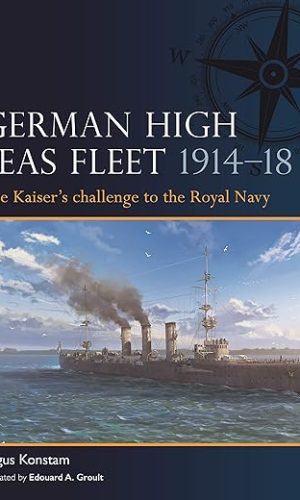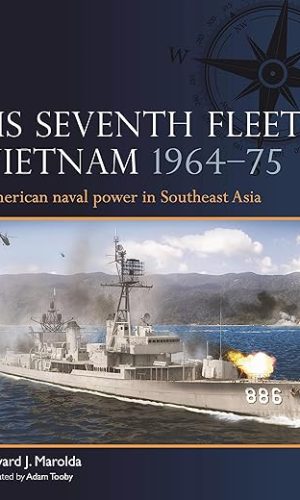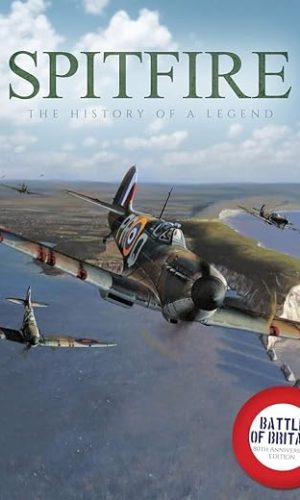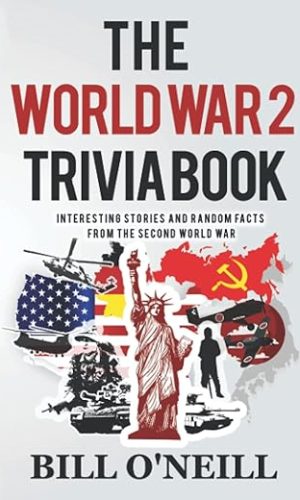Military History
-
American Civil War For Dummies, 2nd Edition
Take a walk through history with this guide for lifelong learnersThe American Civil War is one of the most fascinating and impactful periods in American history. Besides bringing about the end of slavery, the war had many important economic and social effects that continue to shape the history and present-day realities of the American people.
In American Civil War For Dummies, you’ll get an accessible, bird’s-eye view of one of history’s greatest conflicts. All the must-know details of the war are covered here, from the Battle of Gettysburg to the Emancipation Proclamation. You’ll also find:
- Descriptions of the experiences of Black Americans, in both the North and the South, during the war
- Explorations of how slavery and civil rights fit into the social, political, and economic context of the time
- Profiles of some of the most famous generals in the war, including Robert E. Lee and Ulysses S. Grant
Take a moment to get a hands-on education in this critical point in American history. Get American Civil War For Dummies now!
Read more
£13.70£17.10American Civil War For Dummies, 2nd Edition
£13.70£17.10 -
Japan at War in the Pacific: The Rise and Fall of the Japanese Empire in Asia: 1868-1945
“By the time of Japan’s surrender in 1945, an entire generation had grown up knowing nothing but conflict; but the transformation of Japan into a militarist power began decades earlier, with the toppling of the old samurai regime, and the rush of the formerly isolated nation onto the world stage.”Japan at War in the Pacific recounts the dramatic story of Japan’s transformation from a Samurai-led feudal society to a modern military-industrial empire in the space of a few decades―and the many wars it fought along the way. These culminated in an attempt by Japan’s military leaders to create an Asia-Pacific empire which at its greatest extent rivaled the British Empire in scope and power.
The battle for supremacy in the Pacific brought the Japanese to great heights but led ultimately to the nation’s utter devastation at the end of World War II, culminating with the dropping of atomic bombs on Hiroshima and Nagasaki―the only time such weapons have been used in warfare.
In this book, author Jonathan Clements offers fascinating insights into:
- The wars that Japan fought during its rise to supremacy in the western Pacific, including the Russo-Japanese War, the seizure of Manchuria and war in China, and the Pacific theater of World War II.
- The many military actions undertaken by Imperial Japanese forces including the horrific “Rape of Nanjing,” the surprise attack on Pearl Harbor, the decisive defeat at the Battle of Midway, the savage Battles of Okinawa and Iwo Jima, and many more.
- The motivations and beliefs of Japan’s leaders, as well as the policy decisions of a government dedicated to expansion which ultimately led to a complete dismantling of the nation’s political and social order during the Allied Occupation.
- With over 75 photographs and maps, this book vividly recounts the amazing story of Japan’s military conquests. Clements charts the evolution of the Japanese empire in the Pacific and the influence of a ruthless military-led government on everything from culture and food to fashion and education―including the anthems and rallying calls of a martial nation which were silenced long ago but continue to echo in Asian politics.
Read more
£13.70£17.10 -
Battleships of World War I & World War II: 1914-45 (Technical Guides)
For centuries, battleships provided overwhelming firepower at sea. They were not only a major instrument of warfare, but a visible emblem of a nation’s power, wealth and pride. The rise of the aircraft carrier following the Japanese aerial strike on Pearl Harbor in 1941 highlighted the vulnerabilities of the battleship, bringing about its demise as a dominant class of warship.
This book offers a detailed guide to the major types of battleships to fight in the two World Wars. Explore HMS Dreadnought, the first of a class of fast, big-gun battleships to be developed at the beginning of the 20th century; see the great capital ships that exchanged salvos at the battle of Jutland, including the German battlecruiser Derfflinger, which sank the British battleship Queen Mary; find out about the destruction of HMS Hood, which exploded after exchanging fire with the Bismarck, which itself was sunk after a trans-Atlantic chase by a combination of battery fire and aircraft-launched torpedoes; and be amazed at the ‘super-battleship’ Yamato, which despite its size and firepower, made minimal contribution to Japan’s war effort and was sunk by air attack during the defence of Okinawa.
Illustrated with more than 120 vivid artworks and photographs, Technical Guide: Battleships of World War I and World War II is an essential reference guide for modellers and naval warfare enthusiasts.Read more
£13.70£17.10 -
American Fighter Aircraft of World War II: 1941-45 (Technical Guides)
The United States Army Air Force (USAAF) came into its own during World War II, building some of the premier fighters of the era. American Fighter Aircraft of World War II is a detailed guide to all the fighter aircraft types deployed by the USAAF and US Navy from 1941 to 1945.
Organised chronologically, this book includes all-time greats, such as the highly- adaptable P-51 Mustang bomber escort, the carrier-based F6F Hellcat – which outperformed the legendary Japanese A6M Zero fighter – and the Lockheed P-38 Lightning, with its distinctive twin-boom design; as well as lesser-known types, such as the Boeing P-26 Peashooter, the high-altitude Republic P-43 Lancer, and the Lockheed P-80 Shooting Star, the USAAF’s only operational jet fighter during the war. The entries are accompanied by exhaustive captions and specifications.
The guide is illustrated with profile artworks and three-views, as well as two-page dynamic artworks of some of the more famous aircraft in service, such as the P-40 Warhawk ground-attack variant, the twin-engined P-61 Black Widow night-fighter, and the robust P-47 Thunderbolt fighter-bomber.
Illustrated with more than 100 authentic artworks with accurate markings and camouflage, American Fighter Aircraft of World War II is an essential reference guide for modellers and military aviation enthusiasts.Read more
£13.70£17.10 -
American Bomber Aircraft of World War II: 1941-45 (Technical Guides)
The United States built the best strategic bombers of World War II, and by the end of the conflict America’s bombers dominated the skies in both Europe and the Pacific. American Bomber Aircraft of World War II is a detailed guide to all the bombers deployed by the USAAF and US Navy from 1941 to 1945.
Organised chronologically, this book includes all the great types of the era, such as the B-17 Flying Fortress, which led the daylight bombing campaign against German industrial targets; the B-24 Liberator, which carried out the famous raid on the Ploesti oil refinery in Romania in 1943; the rugged Grumman TBF Avenger torpedo bomber, flown by US Navy pilots at the Battle Midway in that key turning point in the Pacific War; and the B-29 Superfortress, the aircraft most responsible for degrading Japan’s ability to wage war with their constant aerial attacks throughout 1944 and 1945.
The guide is illustrated with profile artworks and three-views, as well as two-page dynamic artworks of some of the more famous aircraft in service, such as the highly- adaptable B-25 Mitchell, which served in every theatre in a variety of roles, the Douglas Dauntless SBD naval scout plane, and the Martin B-26 Marauder, one of the fastest medium bombers of its era.
Illustrated with more than 100 authentic artworks with accurate markings and camouflage, American Bomber Aircraft of World War II is an essential reference guide for modellers and military aviation enthusiasts.Read more
£13.70£17.10 -
Indo-Pakistani War of 1971: Volume 1: Birth of a Nation (Asia@War)
In 1947, India and Pakistan were partitioned by their former colonial ruler, Great Britain. A job that should have taken ten-years was done in a few months. Britain, drained by two world wars in 40-years, no longer had the will or the money to guide the subcontinent to a peaceful partition by consensus. More importantly, the subcontinent was impatient for Britain’s departure. The British left in haste, leaving unresolved the issue of Kashmir. This triggered five wars between the new states: 1947-48, 1965, 1971, 1999 and continuing insurgency/counterinsurgency that began in 1987. Two other potential wars were narrowly averted in 1987-88 and 2001-02, and a limited one fought in 1999. Since the basic issue remains unresolved, the next war may be only a matter of time.In 1970, East Pakistan voted for independence and armed rebellion. A quick and nasty counterinsurgency suppressed the rebellion. India, seizing the chance to change the balance of power, first backed East Pakistan, then on 21 and 22 November 1971 invaded with eight divisions. India planned also to attack West Pakistan to recover Kashmir, but at the last moment the offensive was called off due to Soviet pressure. Pakistan attacked pre-emptively, and an all-out war resulted. East Pakistan was overrun by India on 16 December; the US and Soviet forced a ceasefire in the West only a day later. For the first time in 800 years, a predominantly Hindu army defeated a Muslim army.
Through extensive use of official records and participant recollections, rare photography and authentic colour profiles, Ravi Rikhye tells the captivating story of the biggest military conflict fought between India and Pakistan to date, and the war that resulted in emergence of Bangladesh as an independent nation.
Read more
£13.70£19.00 -
Britain’s War: A New World, 1942-1947
WINNER OF THE TEMPLER MEDAL BOOK PRIZE 2020
A SPECTATOR, FINANCIAL TIMES AND DAILY TELEGRAPH BOOK OF THE YEAR 2020
‘A stunning achievement’ Max Hastings, Sunday Times
Part Two of Daniel Todman’s epic history of the Second World War opens with one of the greatest disasters in British military history – the fall of Singapore in February 1942. Unlike the aftermath of Dunkirk, there was no redeeming narrative available here – Britain had been defeated by a far smaller Japanese force in her grandly proclaimed, invincible Asian ‘fortress’.
The unique skill of Daniel Todman’s history lies in its never losing sight of the inter-connectedness of the British experience. The agony of Singapore, for example, is seen through the eyes of its inhabitants, of its defenders, of Churchill’s Cabinet and of ordinary people at home. Each stage of the war, from the nadir of early 1942 to the great series of victories in 1944-5 and on to Indian independence, is described both as it was understood at the time and in the light of the very latest historical research.
Britain’s War is a triumph of narrative, empathy and research, as gripping in its handling of individual witnesses to the war – those doomed to struggle with bombing, rationing, exhausting work and above all the absence of millions of family members – as of the gigantic military, social, technological and economic forces that swept the conflict along. It is the definitive account of a drama which reshaped our country.
‘I cannot recommend this history highly enough’ Keith Lowe, Literary Review
Read more
£13.60£16.10Britain’s War: A New World, 1942-1947
£13.60£16.10 -
The First World War: A Complete History
“A stunning achievement of research and storytelling” that weaves together the major fronts of WWI into a single, sweeping narrative (Publishers Weekly, starred review).
It was to be the war to end all wars, and it began at 11:15 on the morning of June 28, 1914, in an outpost of the Austro-Hungarian Empire called Sarajevo. It would officially end nearly five years later. Unofficially, however, it has never ended: Many of the horrors we live with today are rooted in the First World War.
The Great War left millions of civilians and soldiers maimed or dead. It also saw the creation of new technologies of destruction: tanks, planes, and submarines; machine guns and field artillery; poison gas and chemical warfare. It introduced U-boat packs and strategic bombing, unrestricted war on civilians and mistreatment of prisoners. But the war changed our world in far more fundamental ways than these.
In its wake, empires toppled, monarchies fell, and whole populations lost their national identities. As political systems and geographic boundaries were realigned, the social order shifted seismically. Manners and cultural norms; literature and the arts; education and class distinctions; all underwent a vast sea change.
As historian Martin Gilbert demonstrates in this “majestic opus” of historical synthesis, the twentieth century can be said to have been born on that fateful morning in June of 1914 (Publishers Weekly, starred review).
“One of the first books that anyone should read . . . to try to understand this war and this century.” —The New York Times Book Review
Read more
£13.30 -
Living the Dream, Serving the Queen: A Collection of Royal Navy Memories
For over 400 years the Royal Navy has been the pride of the British Isles, but it wouldn’t be the organisation it is today without the people who make up the crews of these ships and establishments. Here is a collection of over a dozen stories from people who have served their time in the Royal Navy and now recollect their experiences serving their country in the senior service. From the 1950s boy sailor to the sailors who currently serve, we read about the runs ashore, the lifelong friendships, the funny stories, near incidents and the ships they served on. – What happened in New York harbour when a boat was taking crew to shore? – Who caused a huge tailback of traffic outside Faslane naval base? – What did Prince Philip whisper to a Chief Petty Officer during an inspection? – Which submariner saved a man from certain death from electrocution only to be snubbed later? These stories plus much more will help the reader understand why matelots, when asked how they are, reply with, “I’m living the dream, serving the Queen!”Read more
£13.30 -
To Hell and Back: The Last Train from Hiroshima (Asia/Pacific/Perspectives)
Drawing on the voices of atomic bomb survivors and the new science of forensic archaeology, Charles Pellegrino describes the events and the aftermath of two days in August when nuclear devices, detonated over Japan, changed life on Earth forever. To Hell and Back offers readers a stunning, “you are there” time capsule, wrapped in elegant prose. Charles Pellegrino’s scientific authority and close relationship with the A-bomb survivors make his account the most gripping and authoritative ever written. At the narrative’s core are eyewitness accounts of those who experienced the atomic explosions firsthand-the Japanese civilians on the ground. As the first city targeted, Hiroshima is the focus of most histories. Pellegrino gives equal weight to the bombing of Nagasaki, symbolized by the thirty people who are known to have fled Hiroshima for Nagasaki-where they arrived just in time to survive the second bomb. One of them, Tsutomu Yamaguchi, is the only person who experienced the full effects of both cataclysms within Ground Zero. The second time, the blast effects were diverted around the stairwell behind which Yamaguchi’s office conference was convened-placing him and few others in a shock cocoon that offered protection while the entire building disappeared around them. Pellegrino weaves spellbinding stories together within an illustrated narrative that challenges the “official report,” showing exactly what happened in Hiroshima and Nagasaki-and why. Also available from compatible vendors is an enhanced e-book version containing never-before-seen video clips of the survivors, their descendants, and the cities as they are today. Filmed by the author during his research in Japan, these 18 videos are placed throughout the text, taking readers beyond the page and offering an eye-opening and personal way to understand how the effects of the atomic bombs are still felt 70 years after detonation.Read more
£13.30 -
The History of The RAF and The Lancaster Bomber
THE HISTORY OF THE RAF AND THE LANCASTER BOMBER celebrates and commemorates over 100 years of the Royal Air Force. With access to rare RAF archives, Mike Lepine uses photographs and documents to bring the story of the people, planes and missions to life as never before. With a special feature on the Lancaster Bomber which took its maiden flight as a prototype in 1941 and flew in battle in 1942. From its genesis in the horrors of the First World War when pilots were open to the elements in craft made of little more than wood and fabric, to the iconic air battles of the Second World War, through to the lifesaving missions carried out in today’s trouble zones, The History of the RAF looks at the men, women and aircraft that are at the heart of this great service.Read more
£13.30£19.00The History of The RAF and The Lancaster Bomber
£13.30£19.00 -
Modern Military Aircraft (Technical Guides)
Illustrated with detailed artworks of modern military aircraft and their markings with exhaustive captions and specifications, Technical Guide: Modern Military Aircraft is an extensively researched review of the military aircraft deployed by the world’s air forces in recent conflicts in the Balkans, the Caucasus, Iraq, Afghanistan, Syria and elsewhere. Organised alphabetically by manufacturer, this book includes every type of aircraft in use in the world today, from the F-22 Raptor through the Dassault Mirage 2000 to the MiG-29 and Su-57. The book includes multirole fighters, ground attack aircraft, high-level bombers, reconnaissance aircraft, carrier aircraft, and unmanned drones. The guide is illustrated with profile artworks, three-views, and special cutaway artworks of the more famous aircraft in service, such as the F-15E Strike Eagle, Sukhoi Su-27 and Eurofighter Typhoon. Illustrated with more than 110 artworks, Technical Guide: Modern Military Aircraft is an essential reference guide for modellers and enthusiasts with an interest in modern military aircraft.Read more
£13.20£17.10Modern Military Aircraft (Technical Guides)
£13.20£17.10 -
German Fighter Aircraft of World War II: 1939-45 (Technical Guides)
Arranged by type, German Fighter Aircraft of World War II offers a highly illustrated guide to the most important fighters used by the Luftwaffe during the conflict. It features such classics as the Messerschmitt Bf 109 and Bf 110, the Heinkel He 100D-1 and the Focke-Wulf Fw 187 and Fw 190, as well as curiosities such as the Arado Ar 68F-1, Henschel Hs 123 and Heinkel He 51B biplanes. Late war innovations, such as the jet and rocket powered Me 262, Me 163 and Heinkel He 162, are also included. Most types are represented in numerous variants and with examples drawn from different theatres of the war. The book includes all the major fighters that served in the invasion of Poland, the defeat of France, the Battle of Britain, Operation Barbarossa, the war in the Mediterranean, the fighting on the Eastern Front and the Defence of the Reich. Each featured profile includes authentic markings and colour schemes, while every separate model is accompanied by detailed specifications. Packed with 110 full-colour artworks, German Fighter Aircraft of World War II is a key reference guide for military modellers and World War II enthusiasts.Read more
£13.00£16.10 -
Spitfire (Technical Guides)
If asked to name a British aircraft of World War II, many people would pick the Spitfire. In production and frontline service throughout the war, this Supermarine design matured to become one of the greatest fighter aircraft of all time. By combining superb aerodynamics with one of the best aero-engines ever produced, R. J. Mitchell and his Supermarine team created a pure thoroughbred fighter which became a legend, especially during the Battle of Britain, the type’s baptism of fire. Much loved by its pilots, the Spitfire served as an interceptor, photo-reconnaissance, fighter-bomber and trainer, and it continued to serve in these roles until the 1950s. In total, there were 24 marks of Spitfire and many sub-variants.
Spitfire offers a compact illustrated guide to this most iconic of aircraft, with chapters divided by type and time period. Find out about the Mk VB, the most numerous and hardy model that served in every theatre of war, including flying with the Soviet Air Force on the Eastern Front; marvel at EN409, a Mk XI that achieved a speed record of 975km/h (606mph) in high-speed diving trials; learn about the Spitfire’s role in the Dieppe Raid in 1942, where the Mk Vs and Mk IXs flew over 2000 sorties in support of the landing; and discover well-known Spitfire pilots, included ‘Johnnie’ Johnson, who shot down 34 enemy aircraft and who flew the Spitfire right through his operational career from late 1940 to 1945.
Packed with 100 vivid artworks and photographs, Spitfire is a compact reference guide for lovers of classic aircraft and World War II aviation enthusiasts.Read more
£13.00£17.10Spitfire (Technical Guides)
£13.00£17.10 -
The Complete MAUS, english edition: Art Spiegelman
The first and only graphic novel to win the Pulitzer Prize, MAUS is a brutally moving work of art about a Holocaust survivor — and the son who survives him
‘The first masterpiece in comic book history’ The New Yorker
Maus tells the story of Vladek Spiegelman, a Jewish survivor of Hitler’s Europe, and his son, a cartoonist coming to terms with his father’s story. Approaching the unspeakable through the diminutive (the Nazis are cats, the Jews mice), Vladek’s harrowing story of survival is woven into the author’s account of his tortured relationship with his aging father.
Against the backdrop of guilt brought by survival, they stage a normal life of small arguments and unhappy visits, studying the bloody pawprints of history and tracking its meaning for those who come next.HAILED AS THE GREATEST GRAPHIC NOVEL OF ALL TIME, THIS COMBINED, DEFINITIVE EDITION INCLUDES MAUS I: A SURVIVOR’S TALE AND MAUS II.
___________________________________________________________________________‘The most affecting and successful narrative ever done about the Holocaust’Wall Street Journal
‘A brutally moving work of art’ Boston Globe
‘No summary can do justice to Spiegelman’s narrative skill’ Adam Gopnik
‘Like all great stories, it tells us more about ourselves than we could ever suspect’ Philip Pullman
‘A capital-G Genius’ Michael Chabon
Read more
£13.00£16.10The Complete MAUS, english edition: Art Spiegelman
£13.00£16.10 -
Cold War: For Forty-five Years the World Held its Breath
Cold War is the story of the half-century since the end of the Second World War – the story of our lives. Its framework is the confrontation, military and ideological, between two great powers that dominated the world during these years. It is a story of crises and conflict on a global scale: from the Berlin Blockade and the Cuban Missile Crisis, to the tanks in the streets of Warsaw, Budapest and Prague, to spies, student riots and encounters in space.
In Cold War, Jeremy Isaacs and Taylor Downing record epic history through the detail of individual human experience: the recollections not only of statesmen whose decisions led to these momentous events, but also of the ordinary men and women whose lives were bound up in these years of conflict. Cold War is the first comprehensive history for the general reader to benefit from the recent opening of Soviet, East European and Chinese archives as well as formerly classified American documents. In a driving narrative that it both gripping and informative, the true story of the Cold War can at last be told.Read more
£12.90£14.20 -
The Great Arab Conquests: How the Spread of Islam Changed the World We Live In
A popular history of the Arab invasions that carved out an empire from Spain to China
Today’s Arab world was created at breathtaking speed. Whereas the Roman Empire took over 200 years to reach its fullest extent, the Arab armies overran the whole Middle East, North Africa and Spain within a generation. They annihilated the thousand-year-old Persian Empire and reduced the Byzantine Empire to little more than a city-state based around Constantinople. Within a hundred years of the Prophet’s death, Muslim armies destroyed the Visigoth kingdom of Spain, and crossed the Pyrenees to occupy southern France.
This is the first popular English language account of this astonishing remaking of the political and religious map of the world. Hugh Kennedy’s sweeping narrative reveals how the Arab armies conquered almost everything in their path. One of the few academic historians with a genuine talent for story telling, he offers a compelling mix of larger-than-life characters, battles, treachery and the clash of civilizations.
Read more
£12.90£14.20 -
Tank Craft 2: Sherman Tanks British Army and Royal Marines Normandy Campaign 1944
With production in excess of 55,000 the Sherman tank was eventually in service with most Allied armies of the Second World War and by the time of the Normandy landings was the mainstay of Britain’s armoured battalions. In his second book in the TankCraft series, Dennis Oliver uses wartime photos and extensively researched, exquisitely presented colour illustrations to cover the Sherman tanks used by the units of the Royal Armoured Corps and the Royal Marines during the fighting in northern France. As with all the books in the TankCraft series, a large part of this work showcases available model kits and aftermarket products, complemented by a gallery of beautifully constructed and painted models in various scales. Technical details as well as modifications introduced during production and in the field are also explained as is the complex system of markings employed by British armoured regiments. This book will give the modeller all the information and knowledge required to recreate an authentic miniature representation of the tanks that fought from the beaches of Normandy, through the battles for Caen and on to killing fields of Falaise.Read more
£12.60£14.20 -
The Korean War: An Epic Conflict 1950-1953
The Korean War is journalist and military historian Sir Max Hastings’ compelling account of the forgotten war.
‘The best narrative history of the Korean conflict’ – Guardian
On 25 June 1950 the invasion of South Korea by the Communist North launched one of the bloodiest conflicts of the last century. The seemingly limitless power of the Chinese-backed North was thrown against the ferocious firepower of the UN-backed South in a war that can be seen today as the stark prelude to Vietnam.
Max Hastings draws on first-hand accounts of those who fought on both sides to produce this vivid and incisive reassessment of the Korean War, bringing the military and human dimensions into sharp focus. Critically acclaimed on publication, republished with an introduction from the author, The Korean War remains the best narrative history of this conflict.
‘A brilliant tour-de-force’ – Times Literary Supplement
‘Excellent, readable history by a master of the genre’ – Daily Mail
‘This book establishes him as one of the leading British military historians.’ – New York Times
Read more
£12.30£16.10The Korean War: An Epic Conflict 1950-1953
£12.30£16.10 -
Hitler’s Soldiers: The German Army in the Third Reich
A penetrating study of the German army’s military campaigns, relations with the Nazi regime, and complicity in Nazi crimes across occupied EuropeFor decades after 1945, it was generally believed that the German army, professional and morally decent, had largely stood apart from the SS, Gestapo, and other corps of the Nazi machine. Ben Shepherd draws on a wealth of primary sources and recent scholarship to convey a much darker, more complex picture. For the first time, the German army is examined throughout the Second World War, across all combat theaters and occupied regions, and from multiple perspectives: its battle performance, social composition, relationship with the Nazi state, and involvement in war crimes and military occupation.
This was a true people’s army, drawn from across German society and reflecting that society as it existed under the Nazis. Without the army and its conquests abroad, Shepherd explains, the Nazi regime could not have perpetrated its crimes against Jews, prisoners of war, and civilians in occupied countries. The author examines how the army was complicit in these crimes and why some soldiers, units, and higher commands were more complicit than others. Shepherd also reveals the reasons for the army’s early battlefield successes and its mounting defeats up to 1945, the latter due not only to Allied superiority and Hitler’s mismanagement as commander-in-chief, but also to the failings―moral, political, economic, strategic, and operational―of the army’s own leadership.Read more
£12.30 -
The Rifle: Combat Stories from America’s Last WWII Veterans, Told Through an M1 Garand
It all started because of a rifle.The Rifle is an inspirational story and hero’s journey of a 28-year-old U.S. Marine, Andrew Biggio, who returned home from combat in Afghanistan and Iraq, full of questions about the price of war. He found answers from those who survived the costliest war of all — WWII veterans.
It began when Biggio bought a 1945 M1 Garand Rifle, the most common rifle used in WWII, to honor his great uncle, a U.S. Army soldier who died on the hills of the Italian countryside. When Biggio showed the gun to his neighbor, WWII veteran Corporal Joseph Drago, it unlocked memories Drago had kept unspoken for 50 years. On the spur of the moment, Biggio asked Drago to sign the rifle. Thus began this Marine’s mission to find as many WWII veterans as he could, get their signatures on the rifle, and document their stories.
For two years, Biggio traveled across the country to interview America’s last-living WWII veterans. Each time he put the M1 Garand Rifle in their hands, their eyes lit up with memories triggered by holding the weapon that had been with them every step of the war. With each visit and every story told to Biggio, the veterans signed their names to the rifle. 96 signatures now cover that rifle, each a reminder of the price of war and the courage of our soldiers.
Read more
£12.20£14.20 -
German Field Artillery of World War II: 325 (New Vanguard)
An illustrated study of the big guns of Hitler’s army -– the Wehrmacht’s field artillery, its capabilities and its role in German fighting units of World War II.Often overshadowed in military history by the tanks and aircraft of Blitzkrieg, Germany’s artillery was key to its methods of waging war throughout World War II. Field artillery remained the primary killer on the battlefield, often responsible for three-quarters of combat casualties inflicted.
Redressing the balance, this book surveys the major Wehrmacht guns of the war, and the basic organizational structure of the German field artillery. Its primary focus is on the divisional field guns, especially the lFH 18 10.5cm field howitzer and the 15cm sFH 18 field howitzer that formed the backbone of German artillery. A brief survey is also made of the infantry guns used at the regimental level, and of corps-level heavy artillery. The issue of the use of”Beutewaffen,” captured war-booty field guns, is also looked at, as is the Nebelwerfer and schwere Wurfgerät rocket artillery.
With archive photos and meticulously detailed new illustrations, this book provides a concise study of the German Army’s big guns of World War II, how they were organized and how they were used, both on the Eastern and Western fronts.
Read more
£11.95£12.99 -
The Korean War: A History: 33 (Modern Library Chronicles)
A BRACING ACCOUNT OF A WAR THAT IS EITHER MISUNDERSTOOD, FORGOTTEN, OR WILLFULLY IGNORED
For Americans, it was a discrete conflict lasting from 1950 to 1953. But for the Asian world the Korean War was a generations-long struggle that still haunts contemporary events. With access to new evidence and secret materials from both here and abroad, including an archive of captured North Korean documents, Bruce Cumings reveals the war as it was actually fought. He describes its origin as a civil war, preordained long before the first shots were fired in June 1950 by lingering fury over Japan’s occupation of Korea from 1910 to 1945. Cumings then shares the neglected history of America’s post-World War II occupation of Korea, reveals untold stories of bloody insurgencies and rebellions, and tells of the United States officially entering the action on the side of the South, exposing as never before the appalling massacres and atrocities committed on all sides.
Elegantly written and blisteringly honest, The Korean War is, like the war it illuminates, brief, devastating, and essential.
Read more
£11.60£12.10 -
Royal Naval Submarines 1901 to 2008
This is a must-buy for the Royal Navy and Submarine enthusiast, being a complete directory of RN submarines from the outset to the present day. There is a wealth of detail on each class. Every entry contains the specification, launch dates of individual boats, details of evolving construction and armament and other salient information in a compact form. The high quality of the drawings of the majority of classes adds to the value of this work which includes the very latest Astute submarines currently coming into service. This book is a complete directory of submarines and will be widely welcomed by all with an interest, professional or lay, in the subject.Read more
£11.60£14.20Royal Naval Submarines 1901 to 2008
£11.60£14.20 -
Raiders from the Sea: The Story of the Special Boat Service in WWII
The Special Boat Service was a small force during World War II, never more than about 300 men. But that did not stop it from inflicting great damage on the enemy. In the Mediterranean arena and in the Aegean, which the Germans controlled after the fall of Greece and Crete, this small commando force kept up a constant campaign of harassment, thus pinning down enemy forces and preventing their joining other fronts. They travelled by night to their targets, using submarines, small surface vessels or canoes, with the commanders of the vessels often putting themselves in danger in order to help the men carry out their dangerous and secret missions. They were reliant on the co-operation of the fiercely independent Greeks and in particular the Cretans, all working together in their common objective against the German invaders. John Lodwick took part in the SBS Mediterranean campaign and writes from personal experience with the panache and verve of the squadron itself. For it is more than the story of the remarkable men who made up the force: men such as Anders Lassen, ‘the Dreadful Dane’ who was awarded a posthumous VC, Fitzroy Maclean, Eric Newby, Jock Lapraik, and Lord Jellicoe, who commanded the squadron for almost two years and who contributed a memorable foreword to this memoir. Strong, determined individuals, together the men of the Special Boat Service formed a deadly, cohesive fighting force which contributed much to the war in the Mediterranean and to whom John Lodwick’s book is an excitingly readable tribute.Read more
£11.60£14.20 -
The Mammoth Book of the Vietnam War (Mammoth Books)
By 1969, following the French defeat at Dien Bien Phu, over 500,000 US troops were ‘in country’ in Vietnam. Before America’s longest war had ended with the fall of Saigon in 1975, 450,000 Vietnamese had died, along with 36,000 Americans. The Vietnam War was the first rock ‘n’ roll war, the first helicopter war with its doctrine of ‘airmobility’, and the first television war; it made napalm and the defoliant Agent Orange infamous, and gave us the New Journalism of Michael Herr and others. It also saw the establishment of the Navy SEALs and Delta Force. At home, America fractured, with the peace movement protesting against the war; at Kent State University, Ohio National Guardsmen fired on unarmed students, killing four and injuring nine.
Lewis’s compelling selection of the best writing to come out of a war covered by some truly outstanding writers, both journalists and combatants, includes an eyewitness account of the first major battle between the US Army and the People’s Army of Vietnam at Ia Drang; a selection of letters home; Nicholas Tomalin’s famous ‘The General Goes Zapping Charlie Cong’; Robert Mason’s ‘R&R’, Studs Terkel’s account of the police breaking up an anti-war protest; John Kifner on the shootings at Kent State; Ron Kovic’s ‘Born on the Fourth of July’; John T. Wheeler’s ‘Khe Sanh: Live in the V Ring’; Pulitzer Prize-winner Seymour Hersh on the massacre at My Lai; Michael Herr’s ‘It Made You Feel Omni’; Viet Cong Truong Nhu Tang’s memoir; naval nurse Maureen Walsh’s memoir, ‘Burning Flesh’; John Pilger on the fall of Saigon; and Tim O’Brien’s ‘If I Die in a Combat Zone’.
Read more
£11.40£12.30The Mammoth Book of the Vietnam War (Mammoth Books)
£11.40£12.30 -
TM 9-803 Willys-Overland MB and Ford Model GPW Jeep Technical Manual
Designated as a light truck, the Jeep was the primary four-wheel drive vehicle for the U.S. Army during WWII. The Jeep’s design owed a great deal to Karl Probst, a freelance designer employed by the American Bantam Car Co. Probst’s prototype “Blitz Buggy” was built in a mere 49 days. It clearly impressed the Army in head-to-head competition against a design submitted by Willys-Overland. However the Buggy’s engine failed to meet requirements, and the Army determined that Bantam could not produce the vehicle in quantity. As a result, the Army bought the Bantam design and asked both Willys and Ford to improve it. The Willys model MB, equipped with a L134 straight-4 “Go Devil”engine, was eventually accepted as the standard. Ford models built to Willys specifications were designated GPW (“G” for government vehicle, “P” designating the 80” wheelbase, and “W” indicating the Willys engine design). (Notably, the “GP” part of the designation is often misinterpreted to mean “General Purpose”, and some have suggested this is the reason the vehicle wasnick-named the “Jeep”. In reality it was probably named after a character in the Popeye cartoons). Roughly 640,000 Jeeps were built during WWII by Ford and Willys, and used on every front. Utilitarian, rugged, and easy to maintain, Jeeps saw service as scout cars, ambulances, firefighting vehicles, as tractors for artillery, and more. The vehicle so impressed war correspondent Ernie Pyle that he called it one of the “two most important pieces of non-combat equipment ever developed” — the other being the pocket stove. Jeeps remained in service for the U.S. military in Korea and in the Vietnam War. Created in 1944, this technical manual reveals a great deal about the Jeep’s design and capabilities. Intended as a manual for those charged with operation and maintenance, this manual shows many aspects of its engine, cooling, power, drive train and other systems. Originally labeled restricted, this manual was declassified long ago and is here reprinted in book form. Care has been taken to preserve the integrity of the text.Read more
£11.40 -
The Oxford History of the First World War
bHistories you can trust./bThe First World War, now a century ago, still shapes the world in which we live, and its legacy lives on, in poetry, in prose, in collective memory and political culture. By the time the war ended in 1918, millions lay dead. Three major empires lay shattered by defeat, those of Germany, Austria-Hungary, and the Ottomans. A fourth, Russia, was in the throes of a revolution that helped define the rest of the twentieth century.
The Oxford History of the First World War brings together in one volume many of the most distinguished historians of the conflict, in an account that matches the scale of the events. From its causes to its consequences, from the Western Front to the Eastern, from the strategy of the politicians to the tactics of the generals, they chart the course of the war and assess its profound political and human consequences. Chapters on economic mobilization, the impact on women, the role of propaganda, and the rise of socialism establish the wider context of the fighting at sea and in the air, and which ranged on land from the trenches of Flanders to the mountains of the Balkans and the deserts of the Middle East.
Read more
£11.20£12.30The Oxford History of the First World War
£11.20£12.30 -
German High Seas Fleet 1914–18: The Kaiser’s challenge to the Royal Navy: 2
A superbly illustrated new account of how Germany’s High Seas Fleet was built, operated and fought, as it challenged the world’s most powerful navy in World War I.Seven years before the outbreak of World War I, the Imperial German Navy rebranded its ‘Home Fleet’ as the Hochseeflotte (‘High Seas Fleet’). This reflected a more aggressive role for it, and one that would inevitably lead to it challenging the Royal Navy. Although never large enough to match its British rival, by 1914 the High Seas Fleet was sufficiently powerful to threaten Britain’s control of the North Sea. For the next four years these waters would become their battleground, as the fleets vied for naval supremacy.
Drawing on extensive research, this book offers the reader a concise, fully illustrated account of how the entire High Seas Fleet was designed and built, how it operated, and how it fought. The fleet was a modern, balanced force of dreadnought battleships, battlecruisers, cruisers and torpedo boats, using Zeppelins and U-boats for reconnaissance. The ultimate test between them came in May 1916, when they clashed at Jutland.
Packed with spectacular original artwork, maps, 3D diagrams and archive photos, it looks not just at the ships, crews and armament, but also explores the command and doctrine of the Kaiser’s new naval weapon, and show how the fleet was forged into a force capable of taking on the most powerful fleet in the world. It also examines how the High Seas Fleet performed in action, and how the Germans battled to keep it in fighting trim until the very end of the war, when the fleet sailed to captivity and self-destruction at Scapa Flow.
Read more
£11.00£15.20 -
US Seventh Fleet, Vietnam 1964–73: American naval power in Southeast Asia
A superbly illustrated examination of how the US Navy’s most powerful fleet fought the Vietnam War, covering all of its elements from aircraft carriers and heavy cruisers to minesweepers and oilers.The US Navy’s Seventh Fleet was at the forefront of America’s campaign in Vietnam for a decade, from the Gulf of Tonkin Incident that began it all to the final evacuation of South Vietnam. Its mission was highly strategic, and while its primary role was to provide carrier-based air power over North Vietnam – from Rolling Thunder through Linebacker – the fleet’s operations were complex, sensitive, and varied, and required all the capabilities of the fleet.
This book is the first overall examination of how US Navy’s most powerful fleet fought and operated in Vietnam. Distilled from thousands of declassified secret documents by renowned US Navy specialist Dr Edward J. Marolda, it offers a unique new portrait of how the Seventh Fleet fought the Vietnam War, from the offensive strike power of naval aviation to the vital role of fleet logistics. As well as the carrier operations, he examines the surface combatant fleet’s gunfire support role, and its raids against the North Vietnamese coast. Dr Marolda also looks at amphibious warfare, fleet air defense, search-and-rescue, and mining and interdiction operations.
Illustrated throughout with archive photos, 3D diagrams and spectacular new artwork, and informed by never-before-translated official documents, publications, and personal accounts from North Vietnamese, Soviet, and Chinese sources, this is the real story behind the US Navy’s Vietnam War.
Read more
£11.00£15.20 -
British Pacific Fleet 1944–45: The Royal Navy in the downfall of Japan
An illustration-packed new account of the powerful Royal Navy fleet that fought alongside the US Navy throughout the last year of the Pacific War.The British Pacific Fleet was the Royal Navy’s primary contribution to the direct defeat of Japan in 1945, and is among the most powerful fleets Britain has ever sent into action. With naval supremacy in home waters achieved by 1944, many of the best and most modern ships in the Royal Navy could be sent to the Pacific, including battleships, submarines, light forces, replenishment groups, and shore establishment. However, the main striking force was the fast carrier force.
Illustrated throughout with dramatic new artwork, 3D diagrams, maps and archive photos, this book explains how the Royal Navy joined the Pacific carrier war, and how the fleet adopted the US Navy’s ruthlessly effective fast carrier doctrine. With ships optimized for short-range operations in the Atlantic and Mediterranean, the BPF had to rapidly adapt to the long-range, high-tempo warfare of the Pacific, and the story is often one of inspired improvisation. The BPF shared the US Navy’s terrifying experience of kamikaze strikes, and famously its armoured carriers proved tougher than the US counterparts.
With discussion of the ships, their technology, how the fleet was organized and commanded, and how it fought the campaign, this book is a fascinating exploration of the Royal Navy’s part in the victory over Japan.
Read more
£11.00£15.20 -
Spitfire The History Of A Legend
THE 80TH ANNIVERSARY OF THE BATTLE OF BRITAIN The Supermarine Spitfire was developed by R.J. Mitchell and his team for just one reason to intercept and shoot down enemy bombers from British skies. Lauded by the Chairman of Vickers as a real killer fighter , the Spitfire was so advanced that it proved a huge challenge to the British aviation industry. The project ran so late that it only began to arrive in significant numbers even as the Battle of Britain was beginning. It was during the Battle of Britain in 1940 that the Spitfire became an enduring legend and a symbol of the British fighting spirit, partnering with the Hawker Hurricane to defeat the might of Hitler s Luftwaffe and prevent invasion. From 1942-3 onwards, it would range and fight around the world, from Malta and North Africa to Soviet Russia and Burma, often taking on new roles like ground attack and bomber escort for which it had never been designed. Profusely illustrated with the pick of historic photographs, Spitfire The History of a Legend covers all the significant Marks developed during the Spitfire s operational service, explaining how the aircraft evolved to meet the challenges presented by the war s changing requirements and by the threat of new generations of Luftwaffe fighters. It also includes coverage of fascinating Spitfire variants including the Seafire, Seafang and Spiteful.Read more
£10.80£19.00Spitfire The History Of A Legend
£10.80£19.00 -
The D-Day Visitor’s Handbook, 80th Anniversary Edition: Your Guide to the Normandy Battlefields and WWII Paris, Revised and Updated
Updated for the 80th anniversary of D-Day.For families of the heroes who fought on the beaches of Normandy during World War II, for fans of Saving Private Ryan, or for traveller interested in history, here is the complete guide to visiting one of the world’s most historic battlefields.
The D-Day Visitor’s Handbook includes everything you need to know to plan and make your visit to the site of the biggest seaborne invasion in history. This compact guidebook not only describes the most significant land invasion of World War II, but provides detailed battlefield maps and tours, identifies monuments and attractions, and locates museums and historical sites to make your planning easier and less stressful.
This guide provides everything you need ahead of your visit, including:
- Easy-to-follow maps and tours
- Where to stay, dine, and shop
- Lists of the best D-Day museums
- How to find war relics still at the battlefield sites
- Historical context for each site, including a description of military action there
- A special bonus guide to World War II history and sites in Paris
The D-Day Visitor’s Handbook contains a wealth of detailed information that is perfect for those considering travelling to France, anyone about to visit these sites, veterans, students of military history, and any others who wish to learn about the history of this legendary battle.
Read more
£10.65£10.99 -
The World War 2 Trivia Book: Interesting Stories and Random Facts from the Second World War: Volume 1 (Trivia War Books)
When was the last time someone around you brought up World War Two?It’s a pretty popular war. Maybe you heard about it yesterday. Maybe last month. But it was probably recent. And when it came up, did you wish that you could be the one to casually drop a fact that would have everyone in the room going, “Wow, I never knew that!”
With this book, you can be that person.
You can read it in just a few minutes a day.
Chapters are bite-sized and easy to read, meant for normal people instead of war historians!
Each chapter ends with a bonus helping of trivia and some quick questions to test your knowledge.
You’ll zoom through this book and be hungry for more.
Get ready to impress your friends with your knowledge – not just of the main events of World War Two, but of all the gritty details and weird true facts. By the time you finish this book, you’ll have a fact for every occasion, from the first moment someone thought about having a second World War, to the most recent blockbuster movies about it.
So get ready to meet characters from Adolf Hitler, rejected art student, to Jack Churchill, the broadsword-swinging male model. Find out why World War Two started in the first place, and why it’s never a good idea to invade Russia in winter. Learn why the United States was going to stay out of the war, how Canadians stole airplanes for the British, and what an orange soft drink has to do with the Nazis.
Some of the things you’re going to learn are sad. Some are scary. Some are sexy. And some are downright strange! It’s everything your history teacher never got around to telling you.
Read more
£10.50£11.40 -
Space: A thrilling human history by Britain’s beloved astronaut Tim Peake
*OUT NOW* From bestselling author and British astronaut Tim Peake, an inspirational human history of space travel, from the Apollo missions to our future forays to Mars. The Right Stuff for a new generation.
‘This book is brilliant – once in a blue moon. A book for the whole family.’ Chris Evans, Virgin Radio
‘An extraordinary book. For anyone – even if you’re not interested in Space. If you’re interested in human stories and the human character – this is delightful.’ BBC Breakfast
‘A fascinating, detailed, playful book drawn from extensive research – Peake met seven Apollo astronauts, Russian cosmonauts and various other space technicians – as well as his considerable personal experience. Lifts the lid on what space is like: the dedication and sacrifice; the politics and pantomime; the practicalities and the peril; the glory and fame; the adjustment back to normal life.’ iPaper
‘A thrilling human history of space’ Daily Mirror
‘The bible of space travel’ Chris Moyles, Radio X
As seen in the major TV series Secrets of Our Universe with Tim Peake.
Only 628 people in human history have left Earth. This is their story.
Astronaut Tim Peake traces the lives of the remarkable men and women who have forged the way for humanity beyond Earth, from Yuri Gagarin to Neil Armstrong, from Valentina Tereshkova to Peggy Whitson.
Full of fascinating insight into our greatest pioneers and unsung heroes, and astonishing detail only an astronaut would know, Peake’s book is the first of its kind to chronicle the human evolution of space exploration over sixty years, from our first forays to now. In the process, Peake reveals what spaceflight is really like: the wondrous view of Earth, the surreal weightlessness, the extraordinary danger, the surprising humdrum, the unexpected humour, the new-found perspective, the years of training, the psychological pressures, the gruelling physical toll, the thrill of launch and the trepidation of re-entry.
In the next few years, NASA will send the first woman and the first person of colour to step on the lunar surface. What will separate these upcoming moonwalkers from the legendary Apollo crews? Does it still take a derring-do attitude, super-human fitness, intelligence, plus ‘the right stuff’ – a fabled grace under pressure? And how will astronauts travel even further – to Mars and beyond?
Space: The Human Story reveals all.
‘Space enthusiasts will snap up Peake’s compelling book in their droves, but his account of courage,
camaraderie and the determination to go where few have gone before deserves to be read by a much wider audience too’ – Daily ExpressRead more
£10.50£20.90 -
Space: A thrilling human history by Britain’s beloved astronaut Tim Peake
*OUT NOW* From bestselling author and British astronaut Tim Peake, an inspirational human history of space travel, from the Apollo missions to our future forays to Mars. The Right Stuff for a new generation.
‘This book is brilliant – once in a blue moon. A book for the whole family.’ Chris Evans, Virgin Radio
‘An extraordinary book. For anyone – even if you’re not interested in Space. If you’re interested in human stories and the human character – this is delightful.’ BBC Breakfast
‘A fascinating, detailed, playful book drawn from extensive research – Peake met seven Apollo astronauts, Russian cosmonauts and various other space technicians – as well as his considerable personal experience. Lifts the lid on what space is like: the dedication and sacrifice; the politics and pantomime; the practicalities and the peril; the glory and fame; the adjustment back to normal life.’ iPaper
‘A thrilling human history of space’ Daily Mirror
‘The bible of space travel’ Chris Moyles, Radio X
As seen in the major TV series Secrets of Our Universe with Tim Peake.
Only 628 people in human history have left Earth. This is their story.
Astronaut Tim Peake traces the lives of the remarkable men and women who have forged the way for humanity beyond Earth, from Yuri Gagarin to Neil Armstrong, from Valentina Tereshkova to Peggy Whitson.
Full of fascinating insight into our greatest pioneers and unsung heroes, and astonishing detail only an astronaut would know, Peake’s book is the first of its kind to chronicle the human evolution of space exploration over sixty years, from our first forays to now. In the process, Peake reveals what spaceflight is really like: the wondrous view of Earth, the surreal weightlessness, the extraordinary danger, the surprising humdrum, the unexpected humour, the new-found perspective, the years of training, the psychological pressures, the gruelling physical toll, the thrill of launch and the trepidation of re-entry.
In the next few years, NASA will send the first woman and the first person of colour to step on the lunar surface. What will separate these upcoming moonwalkers from the legendary Apollo crews? Does it still take a derring-do attitude, super-human fitness, intelligence, plus ‘the right stuff’ – a fabled grace under pressure? And how will astronauts travel even further – to Mars and beyond?
Space: The Human Story reveals all.
‘Space enthusiasts will snap up Peake’s compelling book in their droves, but his account of courage,
camaraderie and the determination to go where few have gone before deserves to be read by a much wider audience too’ – Daily ExpressRead more
£10.50£20.90 -
World War 1 for Teens: Amazing Facts, Key Players, Heroic Acts, Major Battles, and How the War Changed the World (What You Need to Know)
World War 1 for Teens will give you more than just the dates, facts, and figures; it will also tell the fascinating stories of what really happened, giving you all the details of how the battles were fought, and highlighting the key players. After reading this, you will know:
● The causes of the war and who was involved.
● The major battles and the turning points of the war, along with statistics and incredible stories of heroism.
● The new technology and weapons used in the war and the effects they had.
● What it was like to be a soldier in the trenches and what trench warfare was all about.
● What Winston Churchill was doing in this war.
● How General von Hindenburg won a major victory over Russia at Tannenberg in 1914.
● Why Woodrow Wilson kept America neutral during the first half of the war and why he finally stepped in from 1917 until the end.Filled with awesome tales of heroism and bravery, you will be transported back into the middle of the First World War. Read about leaders who fought for peace, and those who only wanted more power and territory. Experience the victories and defeats as if you were on the battlefield with the soldiers.
Also, look out for these add-ons throughout the book with some incredible extra insights into the war:
❖ AMAZING FACTS
Take a jump into the muddy trenches and find out everything you can about the war that changed the modern world!
Scroll up and click BUY NOW to step into World War 1!
Great for teenagers, but also children and kids of all ages – and even adults!
Read more
£10.40 -
World War 2 for Teens: Amazing Facts, Key Players, Heroic Acts, Major Battles, and How the War Changed the World (What You Need to Know)
World War 2 for Teens will give you more than just the dates, facts, and figures; it will fill in the exciting stories of what happened by revealing the gritty details of how the battles were won and paint vivid pictures of the key players. After reading this, you will become an armchair expert on all aspects of WW2:
● The causes of the war and who was involved.
● The major battles and the turning points of the war, along with statistics and incredible stories of heroism.
● The rise and fall of Adolf Hitler; his ambitions, mistakes, and twisted ideologies that saw him win stunning victories as well as perpetrate some of the worst atrocities ever seen.
● Winston Churchill’s inspiring stand against the Germans as he rallied Britain to fight against the evil of the Axis powers.
● America’s reluctance to join the conflict and how the Japanese bombing of Pearl Harbor forced their hand, which would end up shifting the direction of the war.
● The Soviet Union’s part in WWII and their Red Army as they held off the Nazis in the Siege of Leningrad during the bitter Russian winter.
● The Holocaust and how Hitler tried to wipe out the Jews in a systematic strategy of death.Filled with incredible stories, you will find yourself back in the middle of the Second World War; face to face with leaders who shaped the course of history, fighting alongside soldiers in the heat of battle, and living through extraordinary moments with those who endured.
Also, look out for these add-ons throughout the book with some incredible extra insights into the war:
❖ AMAZING FACTS
Strap on your helmet, tighten your boots, and find out all you can about the moment in history that changed the entire world!
Scroll up and click BUY NOW to step into World War 2!
Great for teenagers, but also children and kids of all ages – and even adults!
Read more
£10.40 -
After the Final Whistle: The First Rugby World Cup and the First World War
When Britain’s empire went to war in August 1914, rugby players were the first to volunteer: they led from the front and paid a disproportionate price. When the Armistice came after four long years, their war game was over; even as the last echo of the guns of November faded, it was time to play rugby again. As Allied troops of all nations waited to return home, sport occupied their minds and bodies. In 1919, a grateful Mother Country hosted a rugby tournament for the King’s Cup, to be presented by King George V at Twickenham Stadium. It was a moment of triumph, a celebration of military victory, of Allied unity and of rugby values, moral and physical. Never before had teams from Australia, Canada, New Zealand, South Africa, Britain and France been assembled in one place. Rugby held the first ever ‘World Cup’ – football would not play its own version until 1930. In 2015 the modern Rugby World Cup returns to England and Twickenham as the world remembers the Centenary of the Great War. With a foreword by Jason Leonard, this is the story of rugby’s journey through the First World War to its first World Cup, and how those values endure today.
Read more
£10.40£12.30 -
Winkle: The Extraordinary Life of Britain’s Greatest Pilot
Pre-order the daring life story and astonishing adventures of Captain Eric ‘Winkle’ Brown – Britain’s greatest-ever pilot.Read more
£10.11£10.99



